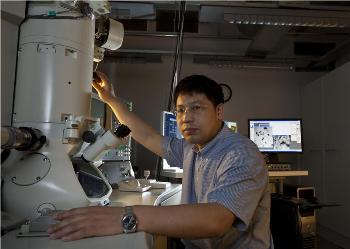Norwegian researchers are working on a five-year project that aims to develop more customized and recycling-friendly aluminium alloys using mathematical models.
 Research scientist Yanjun Li studies the microstructure of aluminium alloys using an electron microscope.
Research scientist Yanjun Li studies the microstructure of aluminium alloys using an electron microscope.
They are focusing on developing technical production methods to re-materialize aluminium scrap into high quality consumer products such as foils and window frames.
Aluminium recycling needs just 5% of the energy used in new aluminium production. This reveals that there will be 95% reduction in greenhouse gases associated with production process. But, when aluminium is recycled, several alloy elements such as zinc, silicon and iron and trace elements such as lead and sodium get accumulated in the final material. This has led to restrictions on the usage of recycled aluminium.
Mechanical characteristics of the recycled material get affected due to the accumulation of impurities in aluminium via continues recycling. This can be overcome by changing the composition of the alloy and temperature conditions and the speed of the homogenisation process.
Till now, recycled aluminium has been utilized in cast products ranging from car wheel rims to engine blocks. But, the increased availability of recycled aluminium requires opening of new paths to the market. This means that rolling and extruding facilities need to be tailored to accept higher quantities of recycled material.
MOREAL is a special project started to produce recycled aluminium as a raw material for rolling and extrusion plants. NTNU and SINTEF lead the project along with Sapa Technology and Hydro Aluminium.
Researchers desired to use mathematical models for developing recycling-friendly aluminium alloys. MOREAL project is working on advanced mathematical models to make the alloy development inexpensive and less time-consuming.
Researchers have performed physical experiments with an aluminium alloy that belongs to the “3xxx family”, a commonly used group, which features manganese as an additive. The additive offers high corrosion resistance, enhanced tensile strength and excellent malleability. With the use of mathematical modelling, the team has described that output of the alloy can be increased by 50% by altering the homogenisation process. This means that the alloy can tolerate extremely high bending before it breaks.